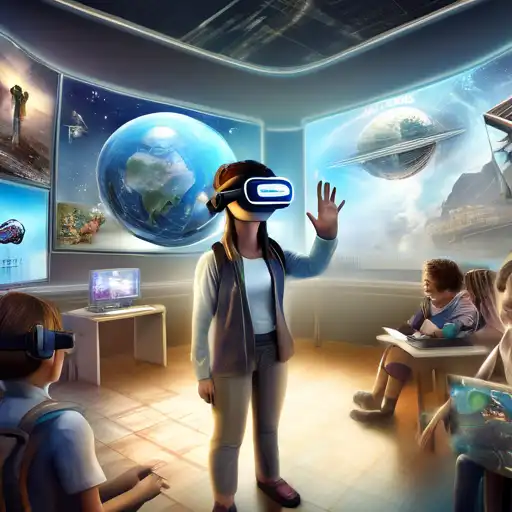Introduction to Virtual Reality in Education
Virtual Reality (VR) is rapidly transforming the educational landscape, offering immersive learning experiences that were once unimaginable. This technology enables students to explore historical sites, dissect virtual frogs, or even travel through space, all from the safety of their classroom. The potential of VR in education is limitless, providing a dynamic and interactive way to engage students.
The Benefits of Virtual Reality in Learning
VR in education offers numerous benefits, including enhanced engagement, improved retention rates, and the ability to simulate real-world scenarios. Students can practice complex procedures in a risk-free environment, making VR an invaluable tool in fields such as medicine and engineering. Furthermore, VR can cater to different learning styles, making education more inclusive.
Enhanced Engagement and Retention
Studies have shown that VR can significantly increase student engagement and information retention. By immersing students in the subject matter, VR makes learning more memorable and enjoyable.
Simulation of Real-World Scenarios
VR allows students to experience real-world scenarios without the associated risks. This is particularly beneficial in medical and technical training, where hands-on experience is crucial.
Challenges and Considerations
Despite its benefits, the integration of VR into education comes with challenges. The cost of VR equipment and the need for technical support can be prohibitive for some institutions. Additionally, there is a learning curve associated with using VR technology effectively in the classroom.
Cost and Accessibility
The initial investment in VR technology can be significant, making it difficult for underfunded schools to adopt. However, as the technology becomes more widespread, costs are expected to decrease.
Training for Educators
Educators need proper training to integrate VR into their curriculum effectively. Professional development programs are essential to ensure that teachers can leverage VR to enhance learning outcomes.
The Future of VR in Education
The future of VR in education is bright, with advancements in technology making it more accessible and affordable. As VR continues to evolve, it will play an increasingly important role in shaping the future of education, offering students unparalleled learning experiences.
For more insights into innovative learning technologies, explore our EdTech Trends section.
Conclusion
Virtual Reality is set to revolutionize the educational sector, providing immersive and interactive learning experiences that enhance student engagement and retention. While challenges remain, the potential benefits of VR in education are too significant to ignore. As technology advances, VR will become an integral part of classrooms worldwide, transforming the way we teach and learn.
